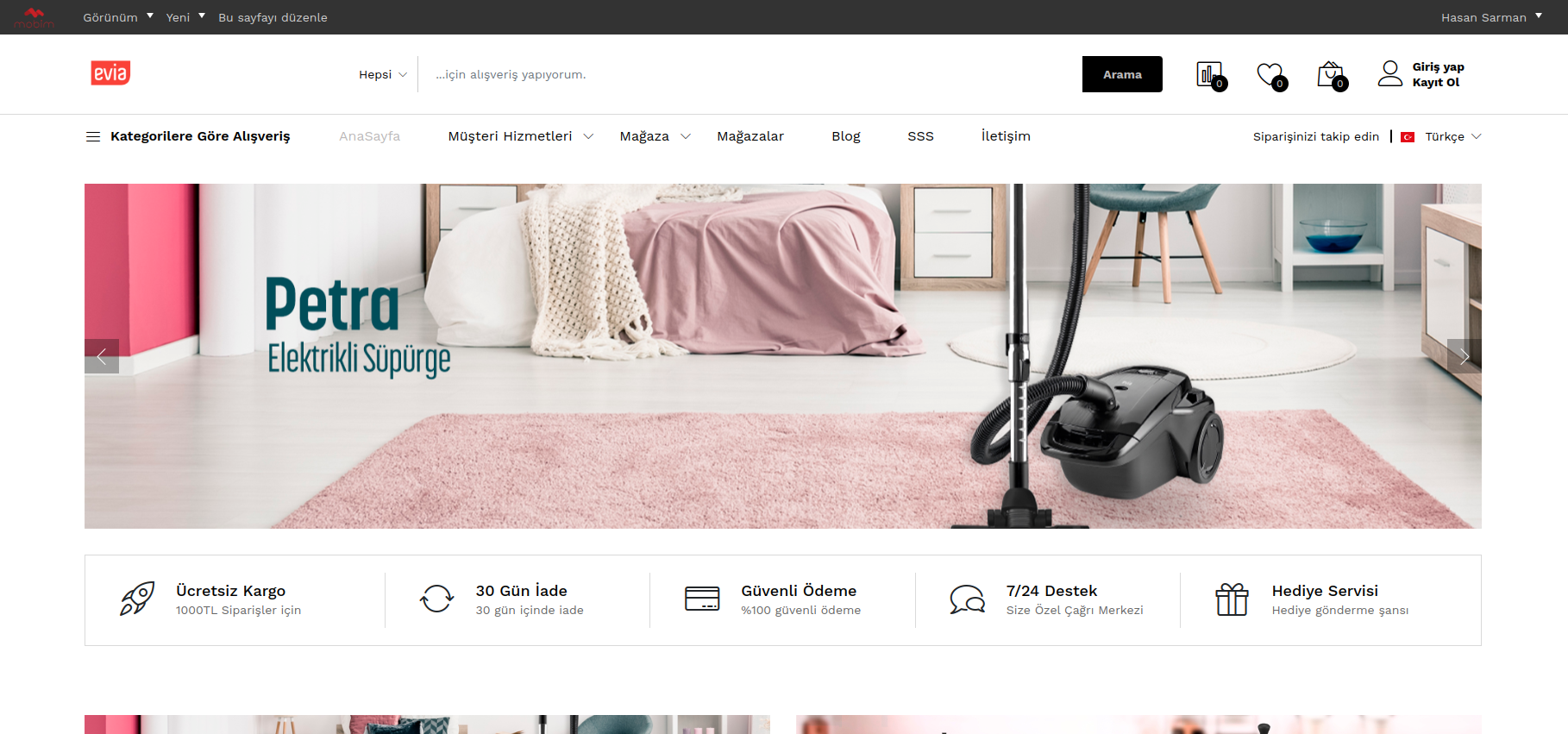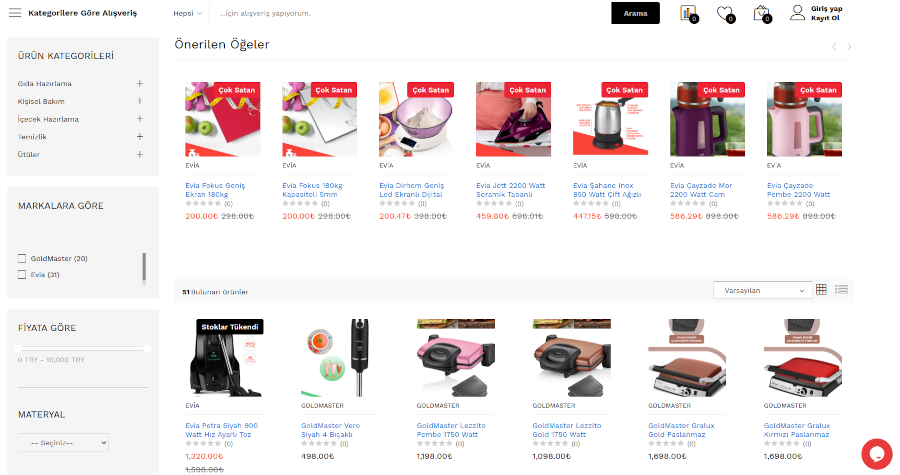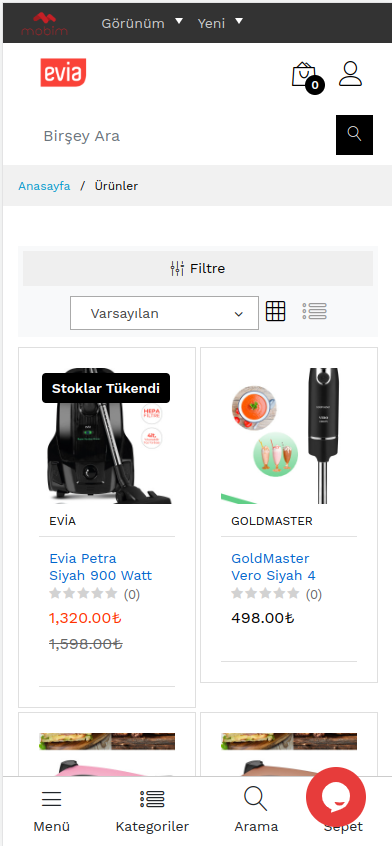
EviaHome.com.tr
CAN BROADEN YOUR BRAND
Ecommerce is an ideal way you can take your brand from a traditional brick and mortar store to an innovative, well loved brand. By offering great products 24 hours a day along with online customer service, blogs and social media, no longer is your business one singular store, with an online presence your business can be the home of your products and the general home of your business, allowing you to fully expand your product ranges without having to worry about moving locations or worrying about not being able to expand your business.
IT’S MORE CONVENIENT
An online store is available all day, every day meaning your customers can visit your store at all times, no matter what their schedule might be. These days people don’t always have the time to physically go shopping, instead more and more people are choosing to shop online to find the items they want or need and if your business can offer this for your customers there’s no you shouldn’t appeal to a wider range of customers all looking for a convenient and flexible experience.
INCREASE YOUR REACH
Due to the internet’s accessibility, millions of people across the world can view your website at any time, meaning that for those looking to expand their businesses and reach out to a larger audience, you have many more opportunities to do so. Compare the amount of people you can reach through a website to the amount you can reach through a high street store or local advertising, there’s no reason you shouldn’t look at taking your business online if you’re looking to improve your reach.
GIVES YOU MARKETING OPPORTUNITIES
Your website is one of the best marketing tools your business has, not only can the use of SEO when building your site lead to more chances of your business getting found in search engines, but a huge number of marketing techniques can also work alongside your website, including pay per click advertising, your social media marketing and your email marketing, all of which can include links back to your website.
SCALABLE
As your business grows it’s very likely you’ll want to grow your product range and your target audience, as well as develop your business for customer requirements and consumer demand. An ecommerce site let’s you scale your business accordingly, allowing you to add more lines, add more payment options and even grow when you choose to ship to, without having to worry about changing your location or moving to a larger premises like you might with a brick and mortar store.
Ecommerce offers business a whole range of opportunities, from marketing opportunities to increasing your products ranges to generating more sales and with an optimised and well developed website you can not only achieve these goals but also offer your customers a round the clock, convenient service, that can boost your business.
Client
Argevim
Project
Mobim360 Fully Integrated E-Commerce Platform.

Our Approach to
the project.
Agile
Agile project management is as the word implies: flexible. It’s also constantly changing. With the agile approach, there are less traditional timelines and projects work more fluidly. As updates or changes are made, decision-makers and managers receive feedback in real-time that allows them to begin making changes for their next roll-out of features or services.“Scrum” is a popular framework within the agile approach, while the lesser-known framework is “kanban.”
How we work & finish the project.
1. Analysis and Planning Once a customer or stakeholder has requested a project, the first step of the SDLC is planning. This usually means looking into: Alignment: How does this project connect to your company’s larger mission and goals? Resource availability and allocation: Do you have the people and tools you need to take this on? Project scheduling: How does this project fit within your company’s goals and other tasks? Cost estimation: How much is it going to cost
2. Requirements As you move on from the planning phase and continue to fill out the SOW, ask questions about the specifics around this project, such as: What problem does this solve? Who’s going to use it and why? What sort of data input/output is needed? Will you need to integrate with other tools or APIs? How will you handle security/privacy? Once your development team gets the answers to these questions, they can start to scope out technical requirements, testing terms, and decide on a technology stack.
3. Design and prototyping<br/> Depending on the software development process you’re following, this phase of the SDLC might mean you create simple wireframes to show how interactions will work in the software, or make more full-fledged prototypes using a tool like Marvel or InVision to test with users. 4. Software Development Whether you’re working in Agile sprints, building out an MVP, or using the more traditional waterfall method, the goal here is to stick to the SOW, avoid scope creep, and build clean, efficient software.
5. Testing Once the features are complete and the product is deemed ready to go, you’ll need to do another round of more in-depth testing. This could mean releasing the product to a small group of beta testers or using UX tools to track how users interact with it.
6. Deployment This step should be pretty much automated using a continuous deployment model or Application Release Automation (ARA) tool.
7. Maintenance and Updates Requirements and customer needs are always evolving. And as people begin to use your software, they’ll undoubtedly find bugs, request new features, and ask for more or different functionality.

